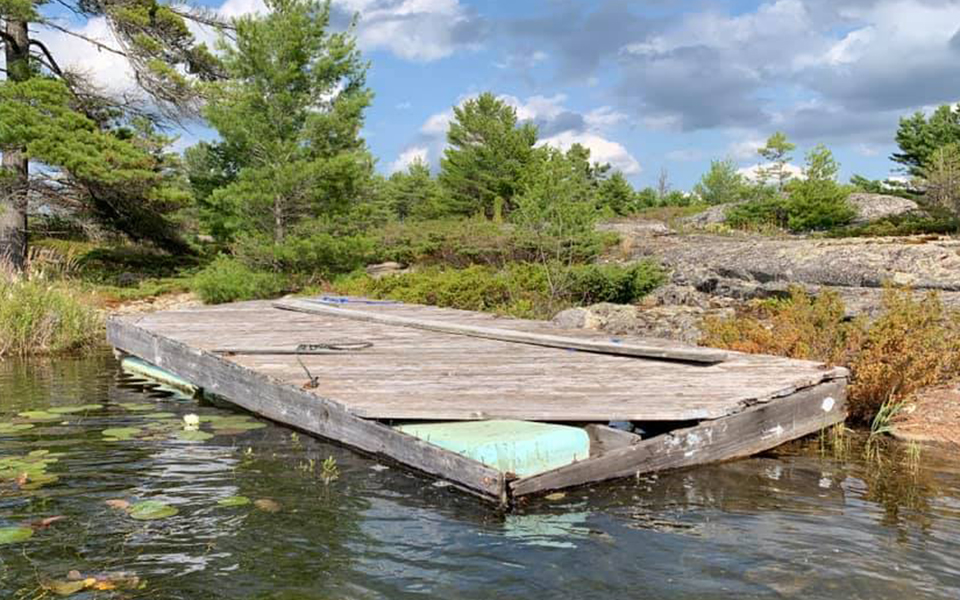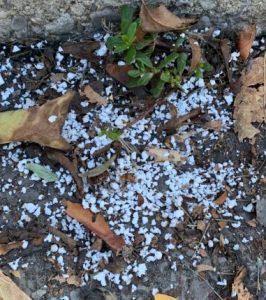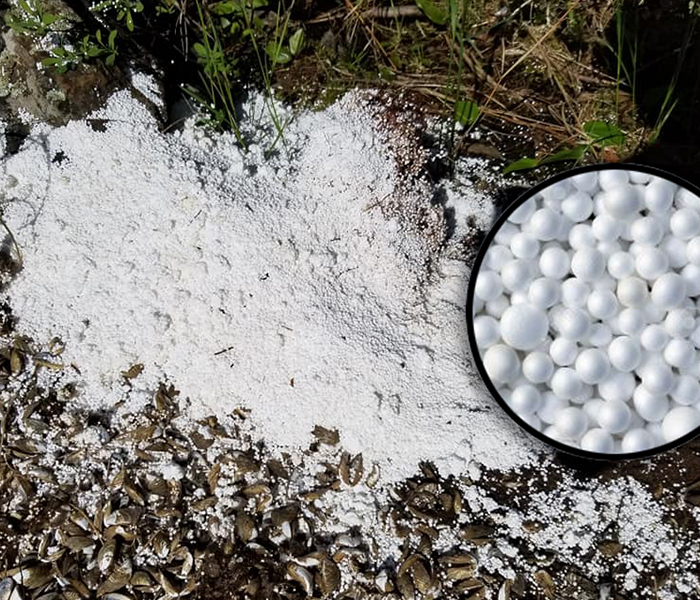
A major source of plastic pollution in our Township is the waste created by deteriorating docks that use Styrofoam for their flotation.
Styrofoam is actually a registered brand of the Dow Chemical company. With very few exceptions it is coloured light blue. Styrofoam is a version of closed-cell extruded polystyrene, commonly used in takeout food containers.

Many older docks use Styrofoam that is not enclosed in a float or billet or drum to protect it and is known as “unencapsulated foam.” With wear and tear this foam breaks down into a variety of smaller pieces including microplastics. In the aquatic environment, they cause visual pollution and get into the food chain because they are absorbed and consumed by plants, mollusks, fish and animals. Both Styrofoam and polystyrene are known carcinogens.
In most shoreline cleanups, small and medium-sized plastic pieces were the number one pollutant collected last year. If you look closely at the debris on your wind-facing shorelines, you will see thousands of tiny pieces of plastic in an array of colours. The longer you look, the more you’ll see. We found loads of Styrofoam during our clean-up Nares Inlet last summer (story below).
Consider replacing your old dock, particularly if animals are starting to break it up or nest under it. And when you do, proper disposal of your old dock is important to ensure that more plastic pieces are not dispersed. The Styrofoam must be separated from the wood for disposal at Site 9 and other landfills.
Then, when you choose flotation for your new dock, consider this: while Styrofoam initially seems cheaper than other options, the overall cost of the product, including environmental damage and a shorter lifespan, can be higher than other flotation options.

A modern flotation option is plastic floats that encapsulate some sort of foam in a watertight container. But make sure to research what’s inside. Is it loose polystyrene (which will spill into the environment if there’s a puncture, see photo)? Or is it a solid foam, sprayed in (which is preferable because it won’t spread if the plastic cracks or breaks)?
Other options include metal tubing, or other solid materials (like plastic drums) that trap air inside as their flotation.
— This story includes material from a Dock Foam story in the GBA Update Newsletter, Spring 2020. Read full article here.